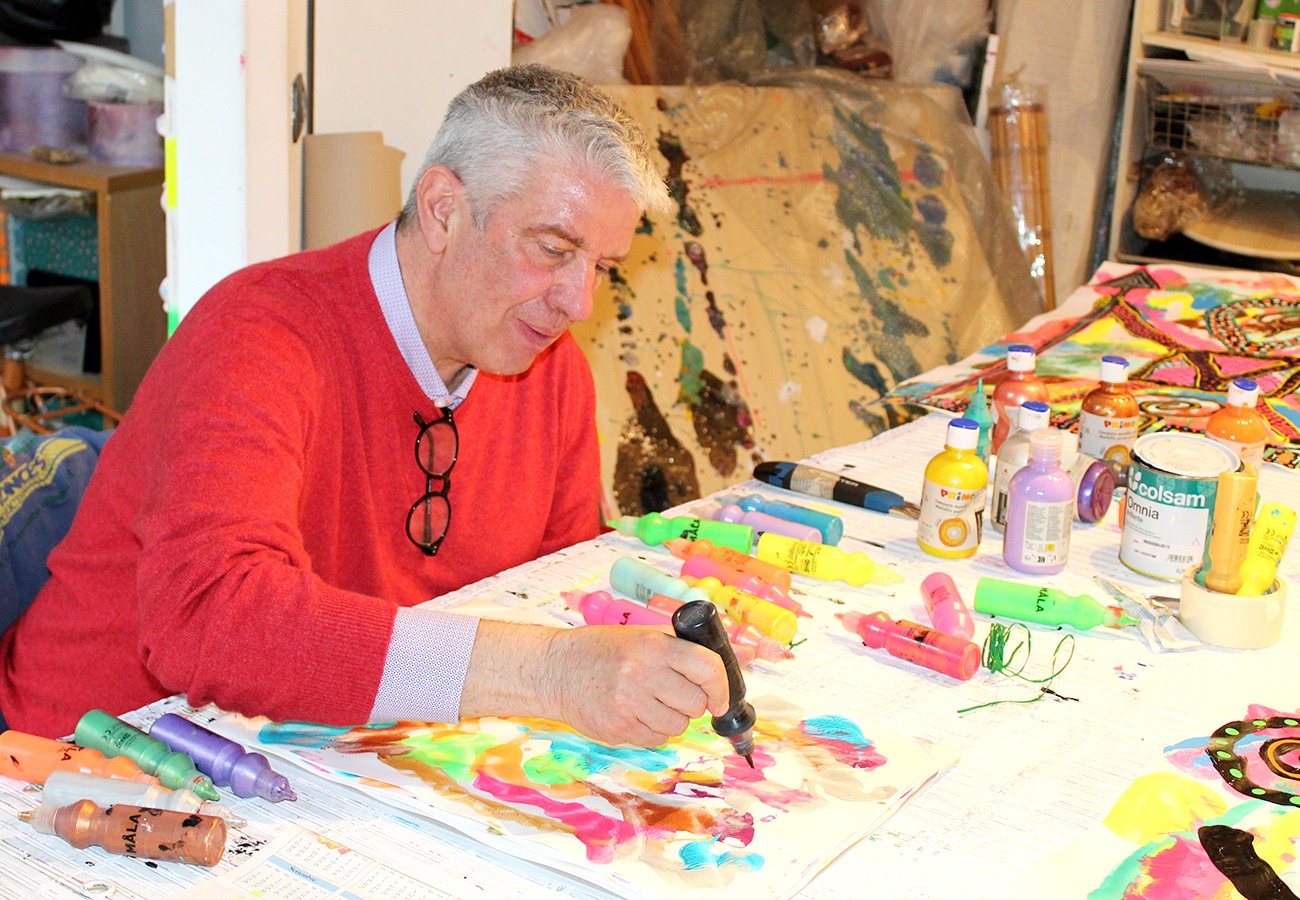From June 16 to 30, Arvedo Arvedi will return to Chicago for his solo exhibition “LINGUAGGI DIVERSI – Antiche Memorie” (Different Languages – Ancient Memories), hosted by the Mooney Foundation. This is a return to his artistic roots in a city he calls “my artistic home,” where, thirty years ago, he began his international career alongside John David Mooney. The title of the exhibition, intentionally split into two parts, reflects a layered poetic approach. “’LINGUAGGI DIVERSI’ represents my continuous search for a personal language, while ‘Antiche Memorie’ is the thematic heart of this exhibition: I wanted to recall the symbolism of cave paintings, those ancestral signs that appear surprisingly similar in cultures separated by oceans and millennia.”
Looking at the works on display, one immediately senses the presence of a primal narrative, translated into a contemporary visual grammar. Totemic figures, stylized warriors, and cosmic symbols emerge on vivid, almost fluorescent backgrounds. “I wanted to rediscover a language that precedes words,” explains Arvedi. “We live in a world where everyone talks, but few understand each other. Returning to universal symbols means recovering a form of communication that is essential, immediate, and shared.” This message may sound political, but for the artist, the intent is deeper: “Art interprets the present, but it goes beyond it. It serves to unite, not to divide.”
Chicago, therefore, is not just an exhibition space but also a biographical and symbolic crossroads. “When John David Mooney invited me to collaborate on the ‘StarDance’ project in 1995, I was just over twenty and had no awareness of what would happen afterward. That experience changed everything,” recalls Arvedi. Now, exactly thirty years later, he returns to that same foundation for an exhibition he calls “imposing.” Sixty works distributed across four sections in a path that alternates large formats with smaller works, all created using the usual mixed technique on paper and fabric, where color is applied with hands, brushes, and pipettes.
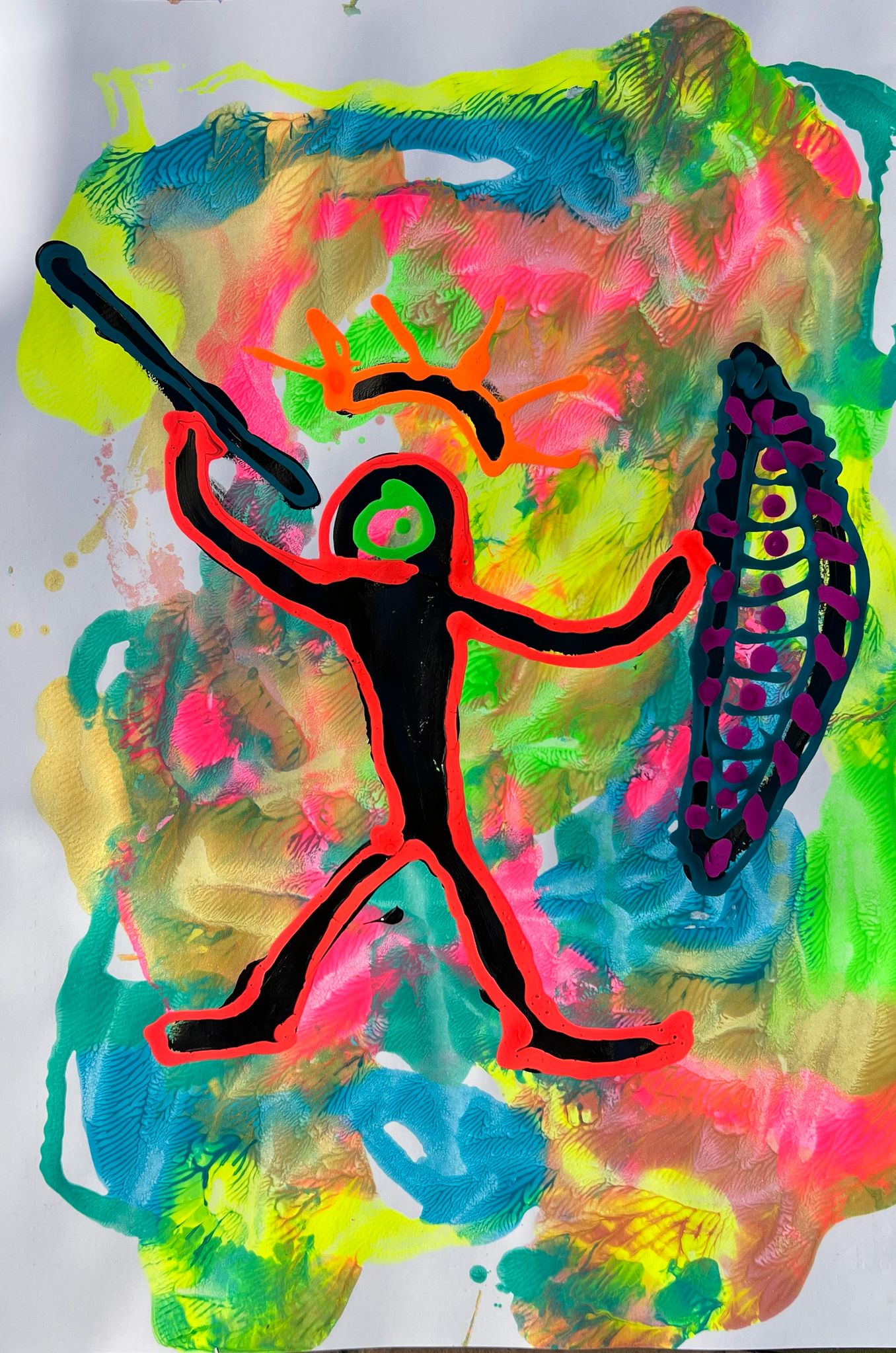
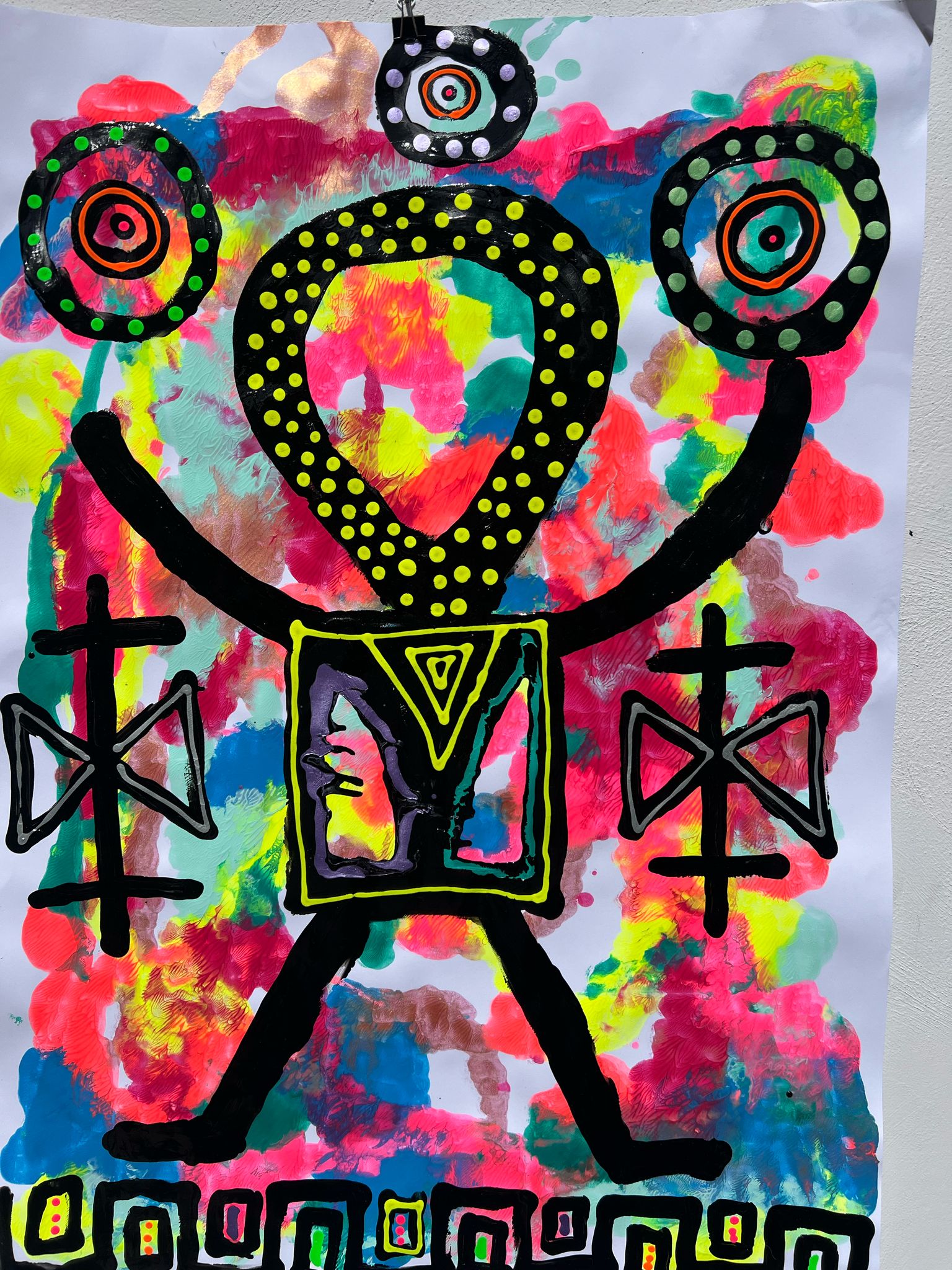
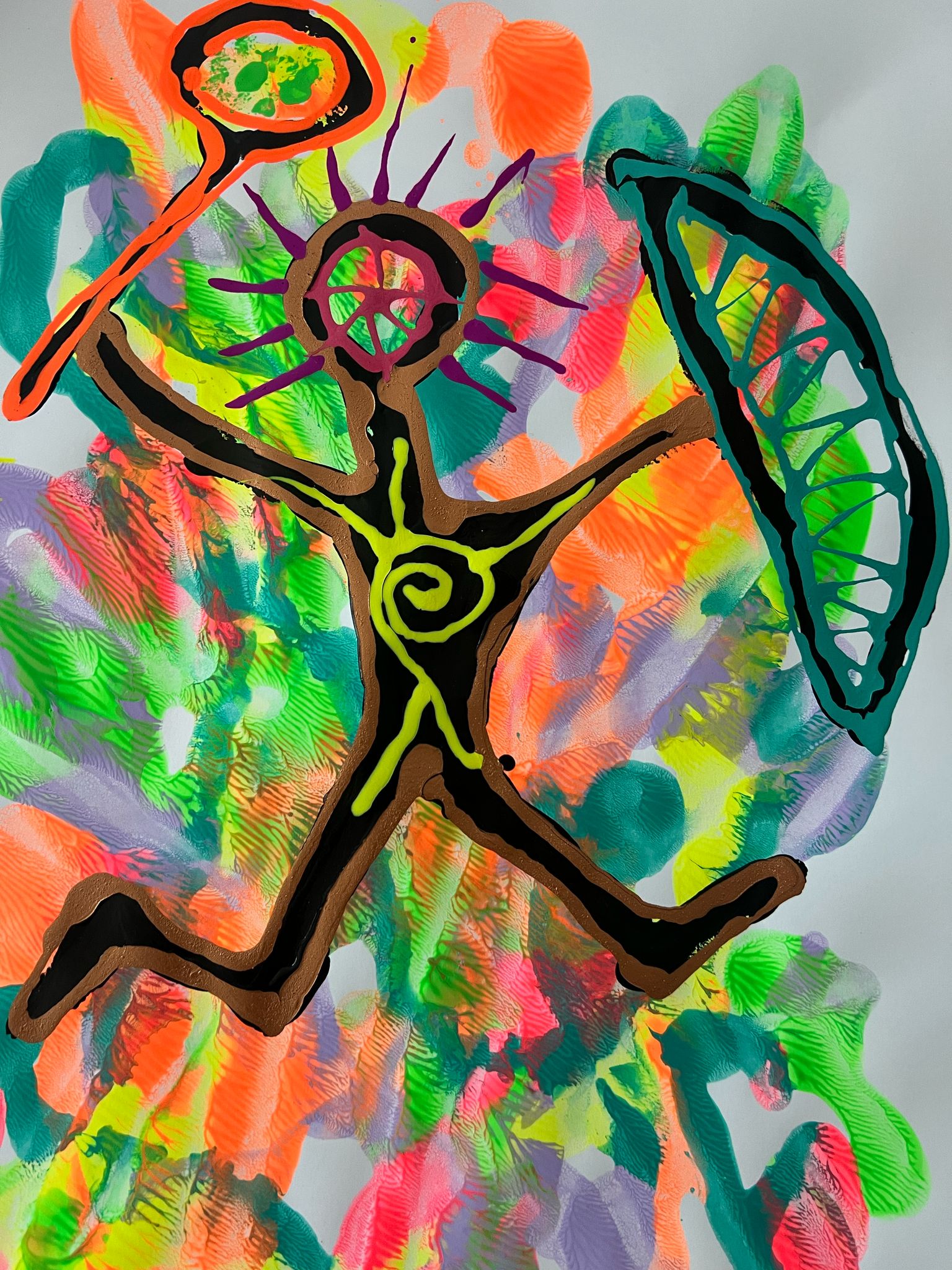

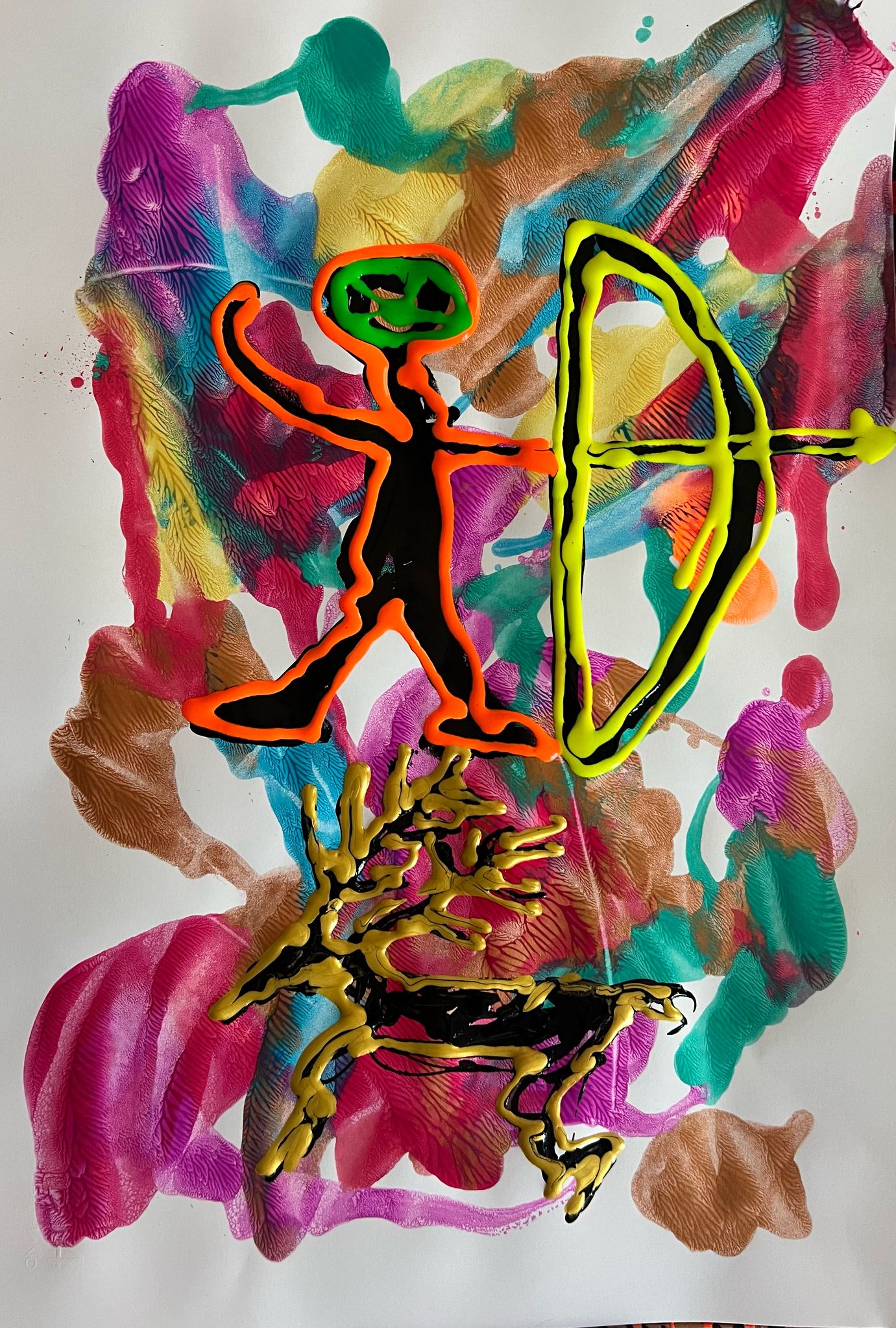
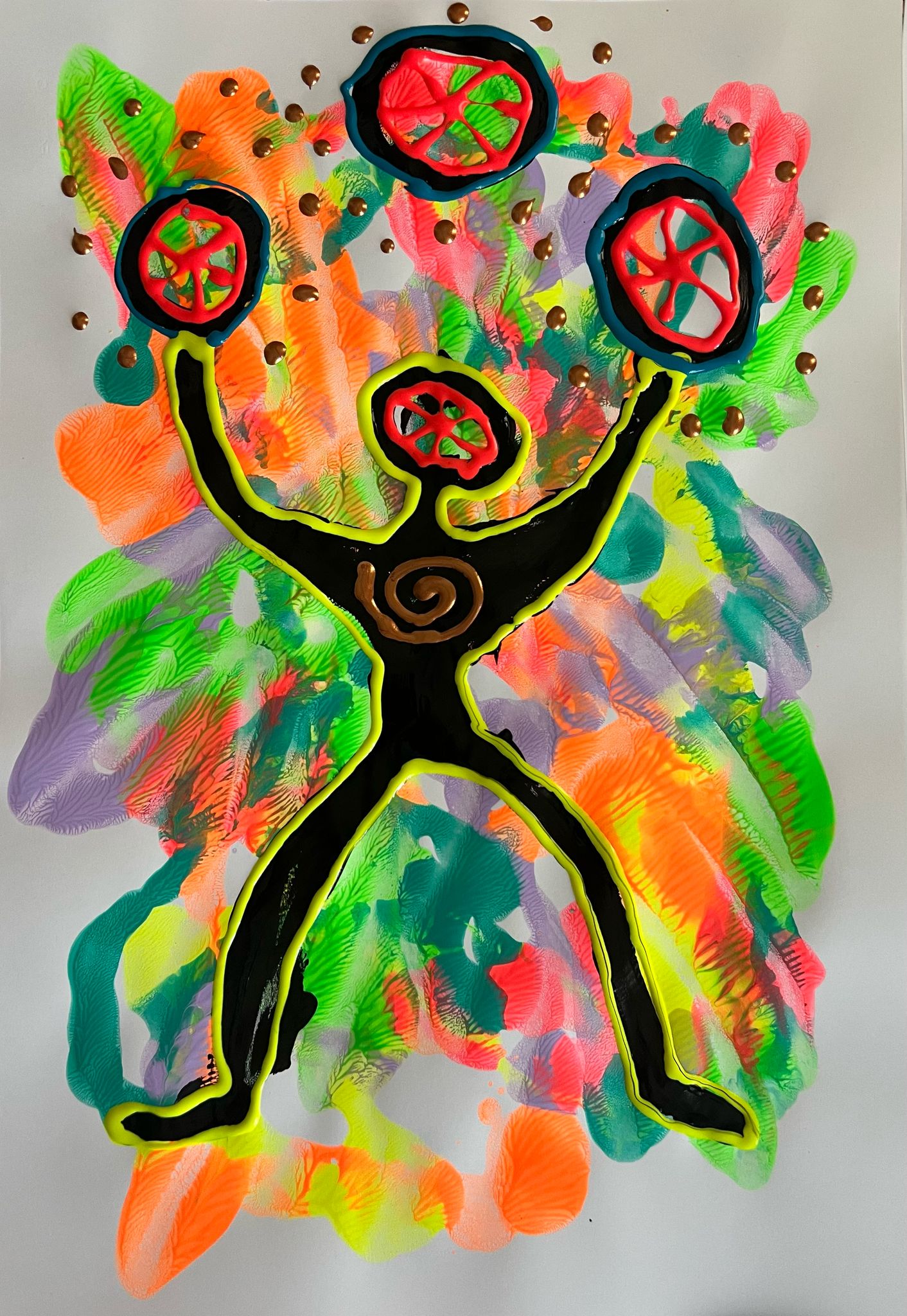
The exhibition is divided into several sections. The first features large canvases representing the four elements—fire, air, water, and earth—with figures inspired by the cave paintings of the Hopi Indians and the famous Nazca lines in Peru. The second section showcases watercolor works of “Dancing Warriors,” inspired by the warrior figures from the rock engravings of Val Camonica and the northern Sahara. The third section is dedicated to the so-called “Warriors with Big Heads,” figures that, according to some interpretations, depict deities or beings with helmets resembling headgear, which some attribute to extraterrestrial origins. Finally, an entire room is devoted to the “Arte da Vestire” (Art to Wear) project, featuring a collection of pashminas created through collaborations with various companies.
“Art has always been a powerful tool for communication and marketing,” explains Arvedi. “In the ‘Arte da Vestire’ project, I create custom pashminas for companies, designed as exclusive gifts for the most important clients or collaborators. Each pashmina is born from a painting made specifically for the company, produced in limited editions, and meant to strengthen the sense of belonging and pride.” The fabrics, measuring 140×140 cm, are versatile, suitable for multiple uses: as a scarf, pareo, or conversation accessory, thanks to their vivid colors and instantly recognizable graphics.
Arvedi’s working method is instinctive yet structured. “I love painting with my hands, I like getting dirty,” he says. “It gives me the feeling of having a direct connection with the work. Of course, I also use brushes and pipettes, but the physicality of the gesture remains fundamental for me.” The main techniques he employs are Plaster, Chromolife, and MirrorDust, depending on the effect he wishes to achieve. “There are three ways I work: pure fantasy, when I let myself be guided by creative flow; preparation for collections, where I study the subjects and develop sketches; and corporate art, where I analyze the logos, colors, and values of the company before creating the work.”
For Arvedi, an exhibition is never just a display. “A painter uses walls, but it’s important to fill the room with a diverse audience. That’s why I always organize side events: book presentations, theater performances, corporate meetings. In Chicago, we’ll present the latest book by Philip Kotler and Gabriele Carboni and host a private event for a technical design company.” It’s a way of opening new spaces for dialogue between art, business, and the public.

